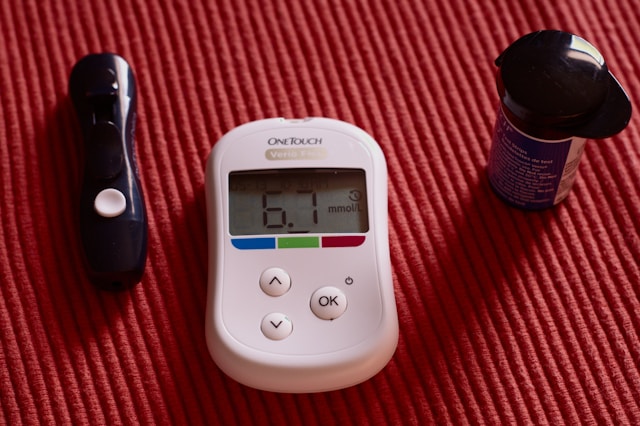Type 2 diabetes is a major medical disorder in which sugar (glucose) levels in the bloodstream increase.
More than 37 million Americans have diabetes (about 1 in 10), and approximately 90-95% of them have type-2-diabetes. Type-2-diabetes most often develops in people over age 45, but more and more children, teens, and young adults are also developing it according to CDC
Insulin is a hormone that helps in the transport of glucose from the bloodstream to the cells, where it is being used for energy. The cells of the body with type 2 diabetes, on the other hand, are unable to properly function as well as they should. Your body may not create enough insulin in the advanced stages of the disease. People with type-2-diabetes are said to have insulin resistance.
Type-2-diabetes that is not well controlled can lead to chronically high blood glucose levels, which can cause a variety of symptoms as well as serious complications.
is type 2 diabetes genetic? Let’s find out
What is the difference between type1 and type 2 diabetes?
Let’s see the differences between type 1 and type-2-diabetes.
Type 1 diabetes normally affects children and adolescents first, although it can afflict adults as well. The immune system destroys pancreatic beta cells in type 1 diabetes, causing them to stop producing insulin.
Type 1 diabetes cannot be prevented, and it is typically inherited.
Although type-2-diabetes is more common as people get older, it can still affect children. The pancreas makes insulin, but the body is unable to efficiently use it. It appears that lifestyle variables play a role in its development. Type 2 diabetes affects the vast majority of people with diabetes.
Type 2 diabetes symptoms
Symptoms/Signs of Type 2 diabetes can be so mild that you don’t notice them. About 8 million people who have it don’t know it. Your body can’t effectively use insulin to bring glucose into your cells if you have type-2-diabetes. As a result, your tissues, muscles, and organs must rely on different energy sources. This is a chain of actions that can result in a range of symptoms. Symptoms include
- Being very thirsty
- Urinating frequently
- Blurry vision
- Being cranky
- Numbness of the hands or feet
- Fatigue
- Wounds that don’t heal
- Feeling hungry
- Weight loss without trying
- Getting more infections
What Causes type 2 diabetes
The Causes of type-2-diabetes includes but are not limited to:
Hereditary propensity: This can be passed naturally from parent to offspring through the genes: just as Blue eyes are hereditary in some families, so also is type 2 diabetes.
Genetic Factor: Scientists have found different bits of DNA that affect how your body makes insulin. Insulin is a hormone that occurs naturally in the body. When you eat, your pancreas produces it and releases it. Insulin aids in the movement of glucose from the bloodstream to the cells of the body, where it is used for energy.
Your body becomes insulin resistant if you have type 2 diabetes. The hormone is no longer being used effectively by your body. Your pancreas will have to work harder to produce more insulin as a result of this. This can harm cells in your pancreas over time. Your pancreas may eventually be unable to produce any insulin.
Too much glucose from your liver. When your blood sugar is low, your liver makes and sends out glucose. After you eat, your blood sugar goes up, and your liver will usually slow down and store its glucose for later. But some people’s livers don’t. They keep cranking out sugar.
Extra weight. Being overweight or obese can cause insulin resistance, especially if you carry your extra pounds around your middle.
Broken beta cells. If the cells that make insulin send out the wrong amount of insulin at the wrong time, your blood sugar gets thrown off. High blood sugar can damage these cells, too.
Glucose builds up in your bloodstream if you don’t create enough insulin or if your body doesn’t utilize it effectively. This depletes the energy supply to your body’s cells. Doctors are baffled as to what causes this.
If you have lived above 45 years of age
Ancestry: If you are of African-American, Hispanic/Latino, Native American, or Alaska Native ancestry there is a higher probability of having type-2-diabetes
Prevention Tips: Type 2 diabetes
Is type 2 diabetes curable? While type-2-diabetes cannot always be prevented, there are a few lifestyle changes that can help postpone or even prevent its onset. Even if you have higher risk factors, such as prediabetes, this is true.
- Diet: A diet rich in fruits, vegetables, good carbs, healthy fats, and very little refined sugar is the greatest way to prevent type 2 diabetes.
- Exercise. Adults should exercise for 150 minutes per week, which translates to 30 minutes per day, five days a week, according to the 2018 Physical Activity Guidelines for AmericansTrusted Source. A combination of muscular strengthening and aerobic activity is also recommended by the Physical Activity Guidelines.
- Weight management. Keeping a moderate weight is a good way to avoid chronic complicationsTrusted Source, including type-2-diabetes.
Treatment for Type 2 Diabetes
The treatment of Type 2 diabetes necessitates cooperation. You’ll need to work closely with your doctor, but your choices will have a big impact on the outcome. Managing type 2 diabetes includes a mix of lifestyle changes and medication.

Lifestyle changes
You may be able to reach your target blood sugar levels with diet and exercise alone.
- Weight loss. Dropping extra pounds can help. While losing 5% of your body weight is good, losing at least 7% and keeping it off seems to be ideal. That means someone who weighs 180 pounds can change their blood sugar levels by losing around 13 pounds. Weight loss can seem overwhelming, but portion control and eating healthy foods are a good place to start.
- Healthy eating. There’s no specific diet for type 2 diabetes. A registered dietitian can teach you about carbs and help you make a meal plan you can stick with. Focus on:
- Eating fewer calories
- Cutting back on refined carbs, especially sweets
- Adding veggies and fruits to your diet
- Getting more fiber
- Exercise. Try to get 30 to 60 minutes of physical activity every day. You can walk, bike, swim, or do anything else that gets your heart rate up. Pair that with strength training, like yoga or weightlifting. If you take a medication that lowers your blood sugar, you might need a snack before a workout.
- Watch your blood sugar levels. Depending on your treatment, especially if you’re on insulin, your doctor will tell you if you need to test your blood sugar levels and how often to do it.
- Regular blood tests to check your blood sugar levels may be recommended by your doctor. This will help you determine how well you’re handling the situation. These examinations will help you determine how effectively your medication is working if you take it.
- Your doctor may also suggest that you use a home monitoring equipment to check your blood glucose levels in between appointments. They’ll tell you how often you should use it and what range you should aim for.

